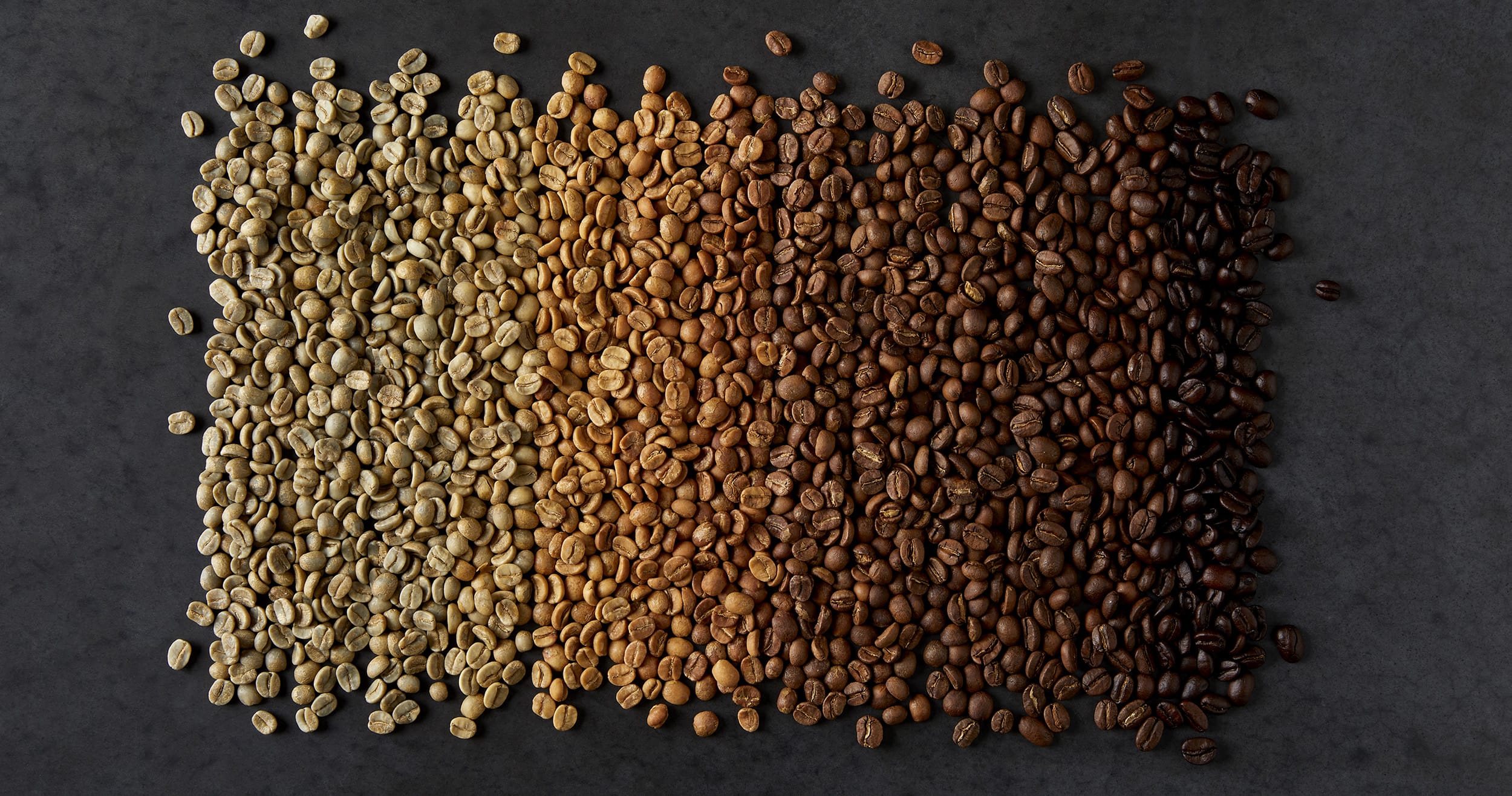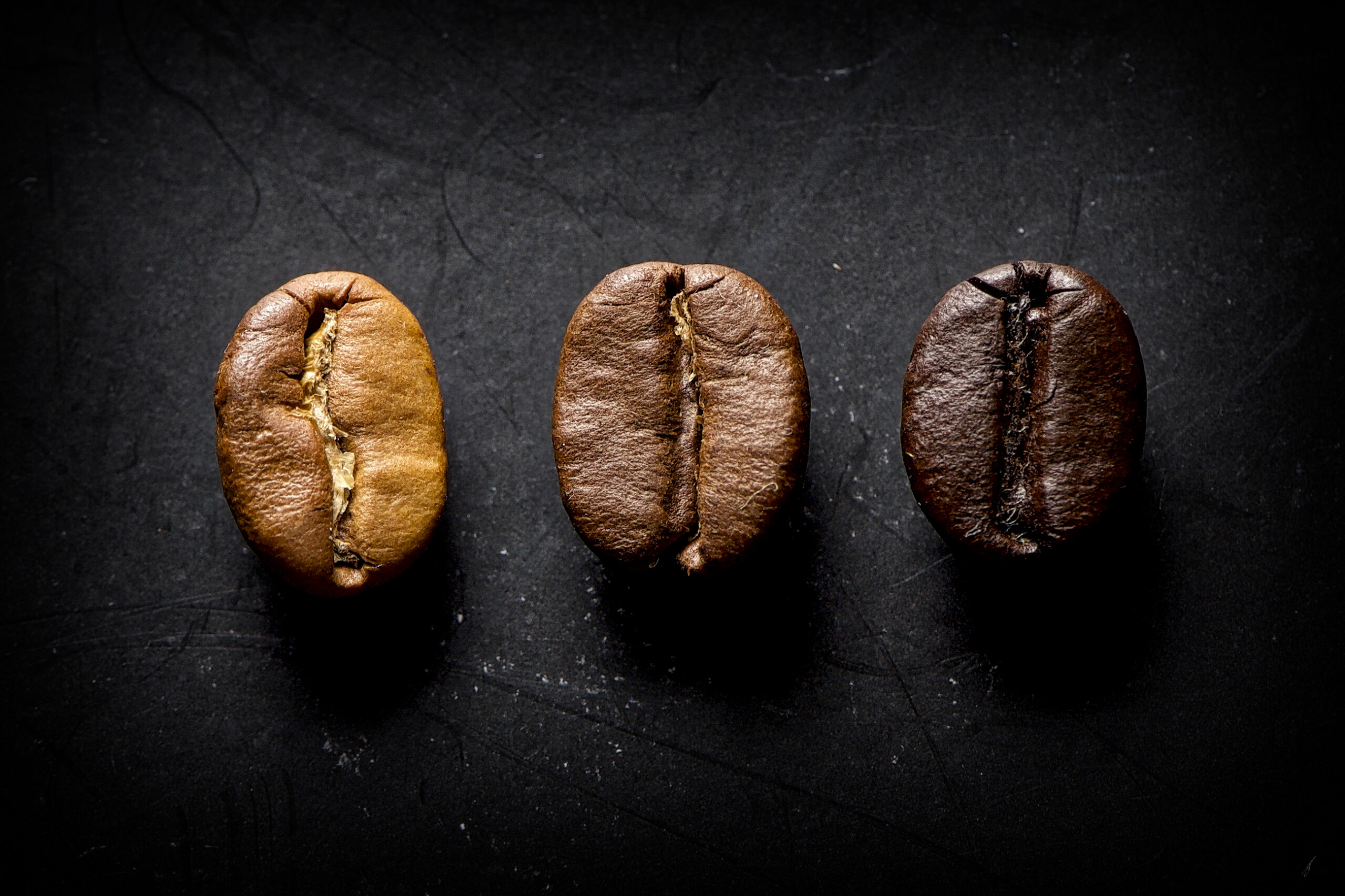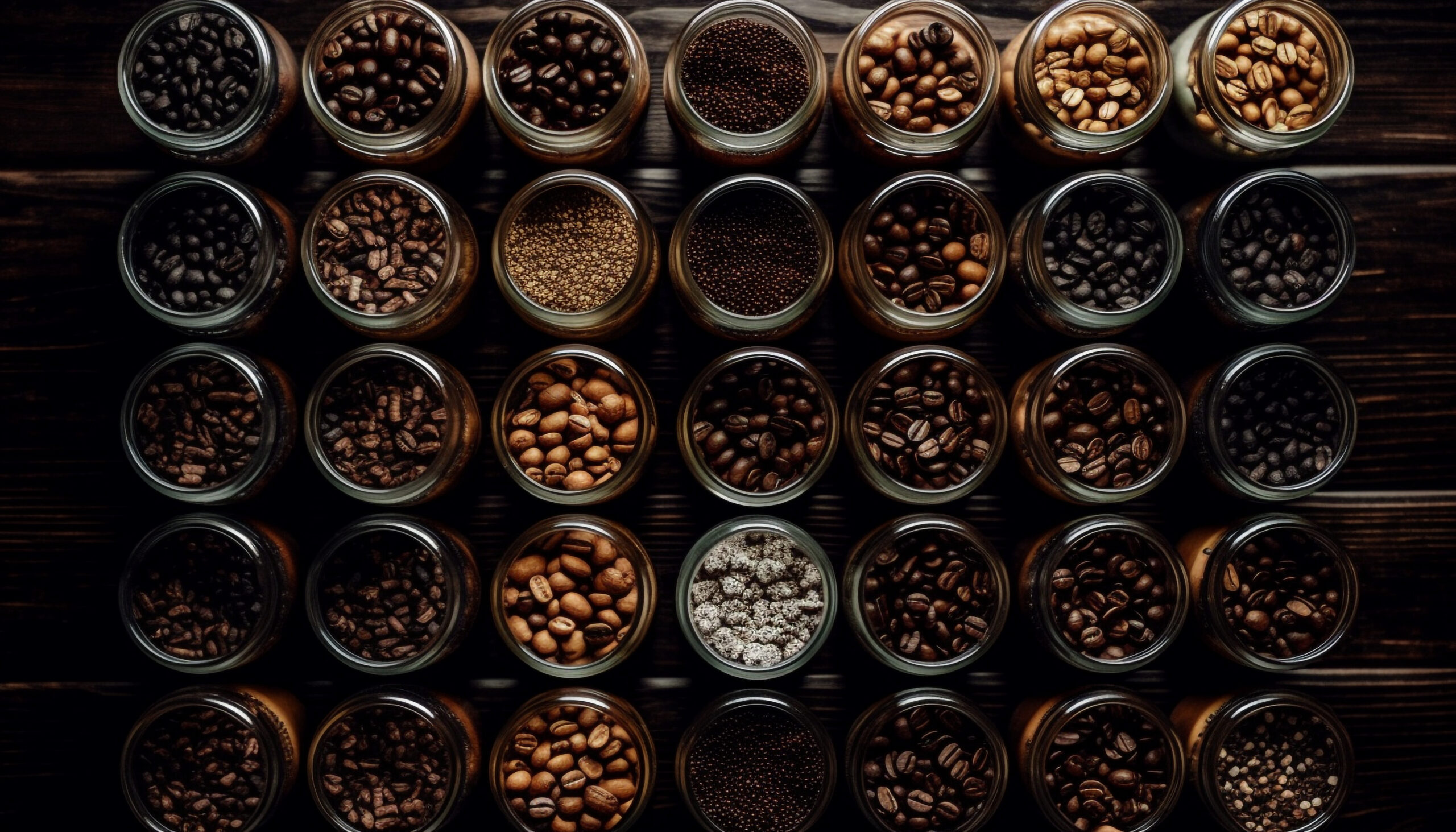
Different roasting levels can vary in sweetness, acidity, bitterness, and aroma.
The Ultimate Coffee Roast Guide: The Difference Between Light, Medium, and Dark Roast Coffee
How many times have we heard, “This coffee is much better than other ones I’ve had!” The answer? Too often, especially for us coffee connoisseurs out there. While a coffee enthusiast may chalk a tasty cup of Joe up to the origin of the beans or the brewing process, one aspect that does not get enough credit is the roasting process.
Roasting coffee, simply put, is the process of turning your coffee seeds into aromatic coffee beans. Roasting options have three primary categories: light roast, medium roast, and dark roast. You may have heard these terms from your favorite barista or seen them on the package of your favorite coffee brand, but have you ever wondered what “roasting” actually means?
Contrary to popular belief, a more extended roast level isn’t synonymous with the “strength” of the coffee, but it does impact everything from your coffee’s flavor profile and aroma to its color, and much more. “Strength” refers to the amount of caffeine in the finished cup, while “roast level” is about the flavor. For example, a darker roast caramelizes more of the sugars in the coffee, which can unlock some of the more robust notes in the beans, but that doesn’t mean the finished coffee contains more caffeine than a lighter roast.
Curious? Let’s dive in and help you to understand it better!
Coffee Roasting Explained:
Turning green coffee seeds, which smell grassy, into the brown, aromatic beans we have come to love—and maybe have become a bit addicted to (Ahem! No judgment here)—is called “coffee roasting.” The meticulous process of drying, roasting, and brewing the coffee bean releases different flavor variations and aromatic compounds. The bean’s origin, as well as the drying process used, plays a big part in the flavor of the coffee. Different roasting levels can produce sweetness, acidity, bitterness, and aroma variations. Different brewing processes can also alter those same flavors and aroma, color, clarity, and the tactile sensation of body or mouthfeel.
Remember the primary roasting categories we mentioned earlier? Each variation, light, medium, or dark, is based on or can be altered by the well-trained hands entrusted to perfect each batch. The skilled application of head over time allows each roaster to control the final product. That said, it’s worth adding a caveat: every roaster and brand may vary slightly in how they define their light, medium, and dark roasts. So simply enjoy testing and tasting different brands and roast levels (as well as origins and washes, which we’ll cover in another post) until you find the right roast type, origin, or blend that you connect best with and, above all, “understands you.” Enjoy the exploration journey!
Primary Coffee Roasts:
Light Roast:
Roasted until the coffee beans reach a temperature of approximately 385 degrees to 410 degrees Fahrenheit. The beans are “ready” after the first crack heard from the seeds, caused by escaping steam and the transformation of the natural compounds in the beans. Due to its lightly roasted attribute, light roast coffee carries much of the flavor of the original seed. The flavor notes of this roast type are often complex, less bitter, can carry floral and fruity hints, and are much brighter in nature. The color of this roast is light brown, and the beans have a dry surface.
Medium Roast:
Roasted until the coffee beans reach an internal temperature of approximately 410-430 degrees Fahrenheit, the medium roast is the sweet middle ground between light and dark roast. When you can’t choose between light vs dark, this is where you find yourself. The flavor profile of this roast type is often complex, with attributes from both light and dark roast, i.e., sweet, complex flavors with some acidity and fruity aroma, but more balanced with a slightly fuller-bodied. The beans still retain some of their original taste from the seed, so medium roasts can, at times, also have some fruity undertones to them.
Dark Roast:
This roast type is bold and robust. Roasted until the coffee beans reach internal temperatures between 430 degrees and 450 degrees Fahrenheit. Roasters ensure dark roast beans have the darkest color of the entire lot. Known to be toasty and smoky, this roast has a pronounced bitterness and low acidity and tends to be fuller-bodied. The dark roast also produces a more robust aroma. Unlike the light roast, the beans also have an oily finish, and much of the coffee seed’s original flavors have transformed entirely due to the longer roasting time.

Which Roast Type Is Better?
Light Roast vs Medium Roast:
Light roast coffees can hold sweetness and fruitiness from the seed’s origin due to less roasting time, making the flavors less bitter and more palpable to new coffee drinkers. In comparison, medium roasts strike a balance, a blend of acidity and sweetness and a fuller body and nuttiness resembling the dark roast. Medium roast coffee often has a more robust aroma and complex flavors than light roast coffee. You can view our light and medium roast coffees here to find which flavor profile best suits you.
Medium Roast vs Dark Roast:
The difference between these two roast types is subtle but apparent. Dark roast coffee often has a profound but simple flavor profile, whereas medium roast is slightly fruity. Relatively more bitter than medium roast, dark roasted coffee does well in espresso-based drinks like lattes and cappuccinos, where other components like milk are used to balance out the flavor. Try our best dark roasts for brewing lattes or cappuccinos. Regarding medium roasts, it is best and ideal for cold brew. You can also use it for French press coffee, where a long brewing time allows the beans’ flavor notes to come through fully.
Light Roast vs Dark Roast:
As you can imagine, the differences between light and dark roasts are substantial in all aspects. These two roasts differ in their flavor profiles, colors, and smells. Light roast coffee can reveal some of the complex flavors inherent to the region and country where the beans were grown. It is ideal for pour-over brewing methods, like the V60 or the Stagg [XF]. As for dark roast, often enjoyed by coffee enthusiasts, the original flavors of this roast are wholly transformed after roasting, leaving you with a less-acidic, full-bodied, deep and often complex flavored brew. A dark roast can be an acquired taste, but once converted, you may find it hard to return to a lighter roast. Drip coffee and French press are great methods for exploring darker roasts.
Coffee Roast Verdict:
Each roast level presents different opportunities to experience unique flavors that tantalize your palate. Much like how sommeliers learn in the world of wine, start with what’s familiar; then, with experimentation and exposure over time, you can begin to think like a sommelier! You can develop a sense, and a sensory vocabular, that will hone your own personal flavor profile. We offer a wide variety of origins and roast levels in our U3 Exchange, where you can begin your coffee journey. Enjoy the process!
Cheers to you for diving deep into the world of coffee with us! U3 Coffee exists to create the most meaningful coffee experience for millions of mindful, motivated humans like you. Let’s learn, empower, and celebrate the journey from bean to cup. Because here, we’re United by Coffee.
Related posts
- Jul 2024 Dive in and explore 3 types of coffee beans: Arabica, Robusta, and Liberica. Discover unique flavor profiles, caffeine content, and costs.
- May 2024 How long does roasted coffee last for peak flavor? Why are coffee roast dates important? Discover what you need to know about coffee shelf life in this post!


